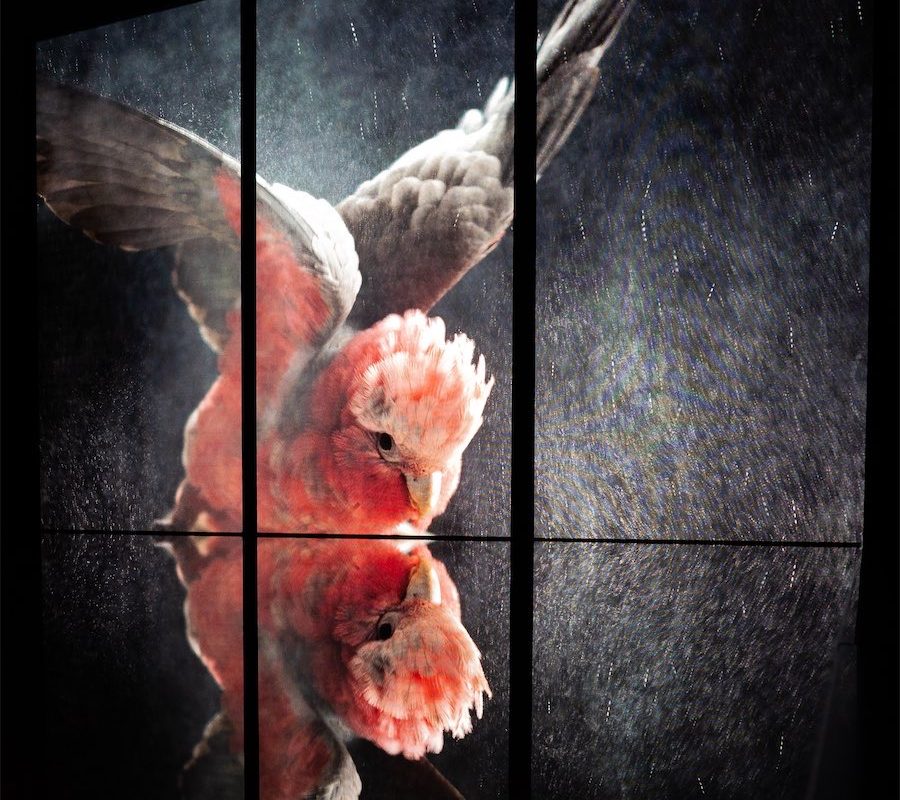
Photography / “A Young Black Kangaroo”, by Dean Qiulin Li, online here and at Huw Davies Gallery, PhotoAccess. Reviewed by CON BOEKEL.
IT is a novel challenge in a locked-down world to write a review of a photographic exhibition that I cannot see.
It takes me several false turns to find my way to the online launch, the accompanying texts and the images. This is a nice metaphor for the experience of writing this review – stumbling about a bit to find the right place but mostly feeling like I’m outside the window looking in.
I love launches. I love the fizz. I love the buzz. I love the stimulation. At launches I eavesdrop hungrily to the milling throng. What are people seeing that I am blind to? What are they saying? Why are they saying that?
The three speakers in the online launch package Kirsten Wehner, Shirley Fitzgerald and Dean Qiulin Li, speak well, present insightful and relevant information, are fully-engaged and, indeed, demonstrate passion.
But for me, the online launch experience is the ersatz coffee version, lacking the caffeine hit or, possibly, the champagne hit.
Uncertainty about the meaning of the word “Woolloomooloo” partially reflects the contested stories about Woolloomooloo itself. There is the ongoing contested meaning of the invasion, the ongoing contest between developers and community, and a three-way contest between the homeless, those in public housing, and the dwellers in the gentrified fringes.

Woolloomooloo embodies a paradox: a place with a dense pattern of real stories but with many loose ends and displacements. As a result, judgemental onlookers might be ill-informed. To redress this, the exhibition seeks to present the public housing tenants on their own terms.
The catalogue essays by Rozee Cutrone and Yuanyu Li help ground the exhibition. Cutrone’s essay in particular is a valuable standalone personal and social testament. It strips bare any misguided tendency to regard the ‘Loo as romantic. It can be a raw, hard, dangerous place.
The exhibition imagery provides variations on the theme of insiders and outsiders, interiors and exteriors, raw spaces and created places. Li’s practice is embedded in this framework as he moves from a personal outside to an artistic inside by earning the trust of the residents.
With a strange sort of feeling of unearned trust, I follow the photographer into the hearts, homes and places of the public housing residents of Woolloomooloo. There is wariness. There is weariness. There is hope. There is a lack of sentimentality.
In most images the residents look the viewer straight in the eye. Examples of this include: “Riley and Sarah, 2019” and “Con and Chichi, 2019”. What I like most is the way participants turn houses into personal made places. It comes to me that the residents are more than survivors. They are insiders. They are at home. They are actors. They curate their homes and their personal presence in the images. In effect, they are the co-creators of the exhibition.

Three wonderful examples are “Richie, 2019”, “Jann, 2019” and “Sabrina, 2020”. The words of the participants accompany the images and add richness to their meanings.
I appreciate the technical aspects of Qiulin Li’s work. I like the way shade and light dapple interior and exterior views. The framing varies from intimate interiors to exteriors that hint at larger worlds. Appropriately, the vantage point is nearly always from human eye level. In some photographs, such as “Window, 2019” there is a pictorial resolution of sorts as light connects interior and exterior spaces. The material objects in the photographs look real. The resulting images are both atmospheric and solid. All that said, I do wish I could see the prints in the flesh.
The exhibition seeks to turn viewers into informed and engaged witnesses. Qiulin Li’s images are eminently fit for this purpose.
Who can be trusted?
In a world of spin and confusion, there’s never been a more important time to support independent journalism in Canberra.
If you trust our work online and want to enforce the power of independent voices, I invite you to make a small contribution.
Every dollar of support is invested back into our journalism to help keep citynews.com.au strong and free.
Thank you,
Ian Meikle, editor





Leave a Reply